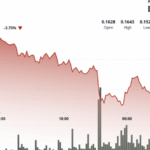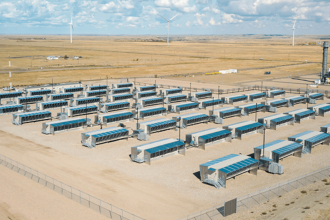U.S. Attacks on Iranian Nuclear Facilities Lead to Sharp Crypto Market Decline
Cryptocurrency markets experienced a significant downturn Sunday morning following the U.S. military strikes on three Iranian nuclear facilities. The combination of heightened geopolitical tensions and resultant fears within financial markets contributed to widespread selloffs.
Market Turmoil: A Record Liquidation Event
The crypto market took heavy losses as over $600 million worth of long positions were liquidated. CoinGlass data indicated a total liquidation value topping $701 million, with approximately $618.69 million attributable to losing long positions.
According to CoinGecko data, the total market capitalization of all cryptocurrencies dipped to $3.25 trillion, representing a 4.4% daily decline. The intensified risk aversion was reflected specifically in a surge of liquidations across several major digital assets.
Ethereum saw approximately $296 million in liquidations over the 24-hour period, with $269 million likely coming from long positions. Bitcoin liquidations reached $152 million, comprising $125 million in long liquidations.
Top Assets Bear the Brunt
- Ethereum led the declines among the top 20 cryptocurrencies, dropping 7.4% to $2,260.
- Cardano followed closely with a 7.1% drop.
- In contrast, Bitcoin held relatively steady, declining just 1.4% to $102,418.
The pronounced sell-off suggests investor sentiment towards cryptocurrencies deteriorated significantly following the news cycle initiated by the U.S. strikes.
Bearish Outlook on Ethereum
User sentiment further soured on Ethereum in decentralized prediction markets. On the platform Myriad (launched by Decrypt’s parent company DASTAN), users turned distinctly bearish.
Rather than betting on the “Moon to $3000 or dip to $2000” outcome, users overwhelmingly favored the lower price scenario. Over 70% of participants now expect Ethereum’s closing price at year-end to be below the $2,000 threshold.
Context: U.S. Military Action Against Iran’s Nuclear Infrastructure
According to U.S. Defense Department officials cited by CBS News, President Donald Trump announced “very successful” airstrikes targeting Iranian nuclear sites. These strikes involved B-2 bombers hitting Iran’s fortified uranium enrichment facility at Fordo.
Submarine-launched Tomahawk missiles attacked facilities at Natanz and Isfahan. Israeli officials confirmed full coordination with the U.S. in planning the operation.
President Trump subsequently warned Iran that “ANY RETALIATION BY IRAN AGAINST THE UNITED STATES OF AMERICA WILL BE MET WITH FORCE FAR GREATER THAN WHAT WAS WITNESSED TONIGHT.”
Iranian Foreign Minister Abbas Araghchi countered by warning of “everlasting consequences” and expressing readiness to defend “national sovereignty.”
Broader Geopolitical Implications
The strikes marked the latest escalation in the ongoing conflict between Israel and Iran. Geopolitical uncertainty also manifested in prediction markets.
On Polymarket, the likelihood of Iran closing the vital Strait of Hormuz rose significantly, with the odds of this happening before July increasing to 46% (from 9% the prior day) and the end-of-year probability rising to 57%.
However, predictors remain largely unconcerned about an official declaration of war between the U.S. and Iran before July, keeping the odds of such an event at just 2%.












